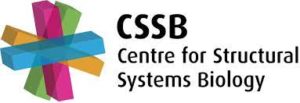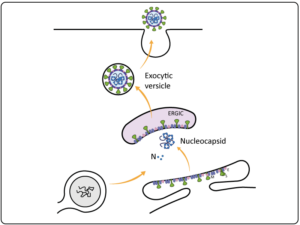P9 – Spatiotemporal dynamics of the SARS-CoV-2 nucleocapsid interactome
Principal Investigators
Prof. Dr. rer. nat. Jens Bosse
Center for Structural Systems Biology, Hamburg
Quantitative Virology

Dr. med. Susanne Pfefferle
University Medical Center Hamburg-Eppendorf
Institute of Medical Microbiology, Virology and Hygiene

Prof. Dr. Charlotte Uetrecht
Center for Structural Systems Biology, Hamburg
Dynamics of Viral Structures

Project Summary

To maximise utilisation of the genetic information in coronavirus (CoV) RNA, encoded proteins are multi-functional. This is partially mediated by the interaction of different cellular and viral proteins in a spatiotemporally tightly controlled manner. A key player in the SARS-CoV-2 life cycle is the nucleoprotein (N), which is centrally involved from replication to particle assembly by the formation of viral nucleoprotein complexes (vRNPs). N engages with cellular and viral factors in a spatiotemporally highly coordinated way. Its multi-faceted role, such as adaptation and immune evasion, is also reflected by the results of our variant monitoring1. While the spike protein shows expectedly the highest mutation rates, N and nsp3 accumulate mutations as well, emerging in virus variants from later phases of the pandemic. It is thus conceivable that N mutations reflect host adaptions under increasing immune pressure. These mutations can affect the N-host interactome, either directly through altered binding interfaces or indirectly by changing patterns of post-translational modifications (PTMs). Insights into the interactome of SARS-CoV-2 and related CoVs emerged from multiple targeted proteomics studies2 but alone provide no information on the spatiotemporal context and quaternary structure. Relevant macromolecular complexes are largely inaccessible for classical as well as cross-linking proteomics approaches. Reverse genetic systems are ideal tools to obtain in depth views on these interactions and their role in viral morphogenesis2, especially in conjunction with native mass spectrometry (MS) and correlative 3D light and electron microscopy (3D-CLEM)5. Recently, we simultaneously monitored protease processing and subsequent assembly of CoV proteins by native MS and showed that complexation depends on the CoV species 3,4. Native MS directly retrieves interactions, stoichiometries, and semi-quantitative abundance of the various protein complexes. PTMs relevant for complex formation are enriched, whereas these are unlinked to specific assemblies in other MS approaches. Moreover, we developed a CLEM approach5 for identifying the potential role of specific protein complexes in whole infected cells by relating them to the viral and cellular ultrastructure.
We hypothesise that SARS-CoV-2 N protein variants have different specific host binding partners and assembly states that are putatively relevant to viral replication and function in distinct locations. Through the combination of wildtype isolates and recombinant mutant viruses, native MS, and CLEM, we will 1) identify specific N-containing complexes from infected cells, 2) define their spatiotemporal orchestration in the cellular environment of infected cells and virions, and 3) confirm how they contribute to the fitness of emerging variants.
References
1. (2021) SARS Coronavirus-2 variant tracing within the first Coronavirus Disease 19 clusters in northern Germany. Clin Microbiol Infect 27:130.e5-130.e8. Abstract
2. (2011) The SARS-coronavirus-host interactome: identification of cyclophilins as target for pan-coronavirus inhibitors. PLoS Pathog 7:e1002331. Abstract
(2021) Hallmarks of Alpha- and Betacoronavirus non-structural protein 7+8 complexes. Sci Adv 7:eabf1004. Abstract
4. (2020) Processing of the SARS-CoV pp1a/ab nsp7-10 region. Biochem J 477:1009-19. Abstract
(2021) Intermittent bulk release of human cytomegalovirus through multivesicular bodies. preprint BioRxiv https://doi.org/10.1101/2020.12.31.424954. Abstract
